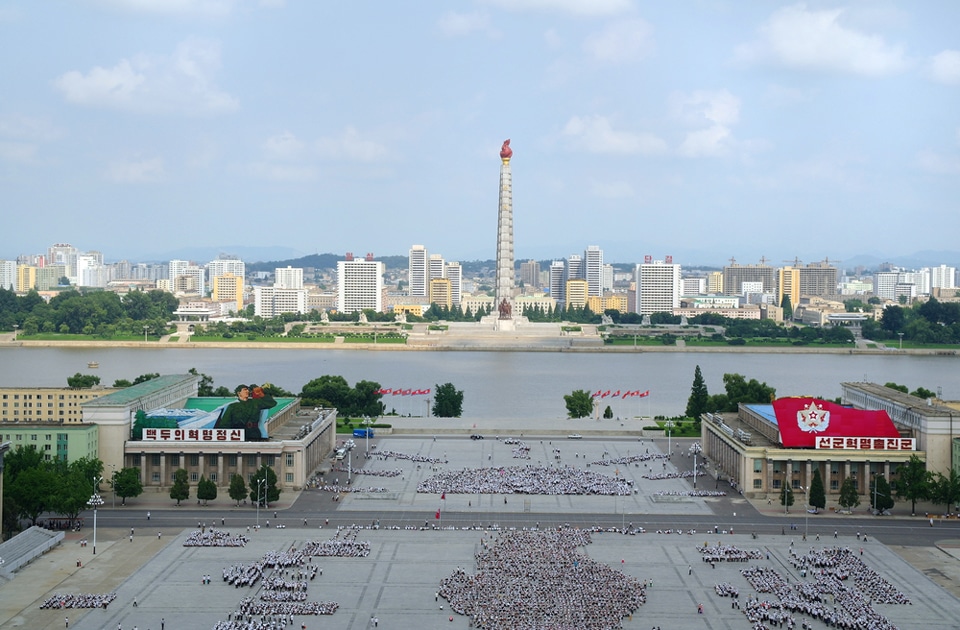Ranked: These are the world’s most depressed cities, 2023

Depression is a complicated mental disorder that has a significant reach, impacting millions of people all over the world. It can take on various shapes, and its effects are felt across different populations. Being familiar with the details of depression, its possible causes, and its prevalence in multiple communities is essential for addressing this prevalent healthcare problem effectively.
Depression, often clinically referred to as major depressive disorder (MDD), is a common human experience that can be triggered by significant life events, such as relationship changes, job loss, or the loss of a loved one. When someone experiences intense feelings of sorrow accompanied by other symptoms such as variations in weight, sleep problems, and disruptions to daily activities, it could be a sign of depression. Ordinarily, managing depression involves a combination of medication and therapy. However, in some situations, it can cause treatment-resistant depression (TRD), which impacts approximately 7 percent of MDD cases. It’s noteworthy that a high BMI has been connected with an increased risk of depression in more than one-fourth of patients.
Depression has been identified as one of the most significant public health concerns worldwide, causing disability. According to a 2020 report from the U.S. Department of Health and Human Services, 8.4 percent of adults in the U.S. reported who have been diagnosed with depression in the prior year. The LGBTQ and migrant population is particularly vulnerable to depression, as 50 percent of 18 to 29-year-olds in this group reported symptoms, compared to 29 percent of people of the same age. Additionally, women are more likely to be diagnosed with depression, although underdiagnosis among men could be a driving factor.
Recognizing depression can be challenging, as symptoms can vary from subtle changes in behavior to severe signs, including thoughts of suicide. Depression takes different forms, such as major depressive disorder (MDD), persistent depressive disorder (PDD). Bipolar disorder, seasonal affective disorder (SAD), psychotic depression, peripartum depression, Premenstrual Dysphoric Disorder (PMDD), and situational depression.
Despite its complexity, depression can be effectively managed with treatments like psychotherapy, medication, and lifestyle adjustments. Understanding the global prevalence of depression is essential for prioritizing mental health initiatives and support systems. To shed light on this issue, our ranking of the world’s 20 most depressed cities is based on a comprehensive data analysis from 10 reliable sources. This research involved identifying cities mentioned in these sources along with their depression rates, assigning corresponding points, and curating a list of the 20 cities with the highest reported levels of depression globally.
- Pyongyang, North Korea: In North Korea, women and girls face pervasive gender discrimination, high rates of sexual violence, and continuous exposure to government-sanctioned gender stereotypes. These challenges compound the broader abuses experienced by the entire population. Human traffickers, often with ties to government authorities, force women into forced labor, sexual exploitation, and sexual servitude, sometimes culminating in forced marriages. Defectors describe Pyongyang as one of the world’s most depressing places due to severe human rights violations and limited freedoms.
- Norilsk, Russia: Topping our list of the most depressed cities in the world is Norilsk, Russia. The city grapples with severe pollution, resulting in elevated rates of cancer, lung diseases, blood and skin disorders, and heightened levels of depression among its residents. Numerous complaints about the city’s governance, poor environmental conditions, challenging climate, isolation due to expensive plane tickets, and slow internet access have contributed to a challenging living environment. Nevertheless, the people of Norilsk maintain a profound attachment and genuine love for their city despite its numerous hardships.
- Dhaka, Bangladesh: Dhaka, Bangladesh, ranks 3rd on our list of the most depressed cities in the world. The living conditions within Dhaka’s slums are significantly dire compared to rural areas despite the proximity to employment opportunities. Pollution levels in these slums have reached hazardous levels in the air, water, and soil, further exacerbating health and mental well-being challenges, including a higher prevalence of depression.
- Mosul, Iraq: Iraq has grappled with prolonged civil conflict, endless political instability, pervasive corruption, and a radical insurgency. Mosul, in particular, has been severely impacted, with issues such as traffic congestion plaguing the city’s damaged bridges. Moreover, those affected by the conflict often sell items such as tissues, cigarettes, and tea to sustain themselves, resulting in heightened economic and mental health difficulties, including depression.
- Pripyat, Ukraine: Pripyat, located near the Chernobyl nuclear disaster site, remains uninhabited due to radiation contamination. Despite official prohibitions, some individuals have opted to live in regions with reduced radiation levels. This unique situation highlights the enduring mental health challenges faced by those who have chosen to stay in the shadow of a nuclear catastrophe, contributing to higher rates of depression.
- Aleppo, Syria: Aleppo, Syria’s second-largest city, was historically a vital agricultural trading hub. However, the conflict in Syria has caused one of the biggest refugee crises in recent history, impacting millions in the city and neighboring countries. The resultant trauma and instability have significantly contributed to higher rates of depression among the population.
- Cairo, Egypt: Cairo, Egypt’s capital, has faced notable challenges, including public safety concerns, such as a series of widely reported sexual assaults in Tahrir Square in 2011. Furthermore, the city faces sanitation problems, with extensive garbage accumulating along the streets. Urban stress and these problems harm residents’ mental health, leading to more depression.
- Damascus, Syria: Damascus, an ancient city with a rich history, grapples with modern challenges. The absence of adequate water supply and deteriorating sewage systems pose significant health hazards, affecting approximately 5.5 million residents. These pressing issues contribute to the city’s higher prevalence of depression.
- Guangzhou, China: In Guangzhou, societal pressures place considerable stress on individuals to meet parental expectations, particularly in academic, social, and career aspects. The manifestation of depressive symptoms in Guangzhou, China, is directly influenced by factors like high population density, the adequacy of public spaces, land use diversity, and street connectivity, leading to an elevated rate of depression.
- Los Angeles, California, USA: Los Angeles, renowned for its Hollywood celebrities, upscale shopping, and cultural scene, grapples with a pressing issue: homelessness. The homeless population in Los Angeles has increased by 9%, with over 75,000 individuals currently facing homelessness throughout the county, as reported by government data. It significantly affects the city’s mental health, leading to increased rates of depression.
- Mumbai, India: Mumbai, India’s financial capital, confronts many challenges primarily tied to the spread of informal settlements commonly known as “slums.” Residents in these areas experience inadequate access to clean water and sanitation facilities, subpar healthcare, limited educational opportunities, high unemployment rates, and the potential for increased crime, all of which contribute to a higher prevalence of depression.
- Bakersfield, California, USA: Situated north of Los Angeles, Bakersfield faces significant social challenges, including homelessness and incidents of gun violence. The city has a reputation for safety concerns, with a current crime rate of 47 incidents per every 1,000 residents, impacting residents’ mental well-being and contributing to higher rates of depression.
- Tijuana, Mexico: Tijuana’s population is growing, and challenges stem from squatters without formal land titles. This population growth and informal settlement presence may not be fully accounted for in official population figures, potentially affecting the city’s reported rates of depression.
- Jakarta, Indonesia: Jakarta is a city grappling with various challenges, including congestion, pollution, seismic vulnerabilities, and subsidence into the Java Sea. The government’s plan to relocate the capital adds to the uncertainty for Jakarta residents, who have limited options for relocation, creating additional stressors that can contribute to depression.
- Al Ain, UAE: Located in the United Arab Emirates, Al Ain is often called the “Garden City” for its natural beauty. In the Arab region, the UAE has the highest prevalence of depression, affecting one in four individuals who experience mental health issues. Al Ain reports a substantial portion of these cases.
- São Paulo, Brazil: São Paulo, a bustling financial hub in Brazil, grapples with a significant mental health challenge. Despite mental health policies, many still go untreated for anxiety and depression. Factors like urban living conditions, economic disparities, and increased violence contribute to this issue.
- Linfen, China: Linfen, in Shanxi Province, deals with both industrial pollution and the associated health issues it brings. High pollution levels have led to an influx of patients suffering from respiratory conditions, including bronchitis, pneumonia, and lung cancer, ultimately contributing to poor mental well-being and a higher prevalence of depression.
- Kanpur, India: Kanpur, with a population of 3 million residents, is among the cities with the worst air quality globally. The city faces a significant air pollution problem, leading to respiratory illnesses, including bronchial asthma, chronic obstructive pulmonary disease, and pneumonia, which, in turn, hurt residents’ mental well-being, contributing to higher rates of depression.
- Paris, France: Paris, the capital of France, is renowned for its cultural richness. However, beneath its charm lies a rising issue of mental health concerns. Recent data from December 2022 shows that 17% of the French population exhibits symptoms of depression, marking a 7% increase compared to pre-pandemic levels. Additionally, 24% of the population experiences symptoms of anxiety.
- Manila, Philippines: As the capital of the Philippines, Manila is a bustling metropolis. It’s also home to a significant mental health challenge. Approximately six million individuals in the Philippines experience depression or anxiety. Alarmingly, during 2021-2022, there were 2,551 reported suicide attempts by Filipino students, with a tragic outcome in 404 cases, with Manila being a hotspot for these incidents.
Understanding the challenges in these cities highlights how environmental, social, and political factors can affect the mental well-being of their populations. To tackle depression in these settings, we need holistic strategies that address individuals and systems.
Have you read?
Ranking: Richest Golfers in the World, 2023.
These Largest Cities Will Face Extreme Climate Change Threats.
These All-American Football Movies Inspired CEOs and Management Consultants The Most.
These Are Most Disliked Companies in America, 2023.
Report: Countries That Attract the Most International Migrants.
Bring the best of the CEOWORLD magazine's global journalism to audiences in the United States and around the world. - Add CEOWORLD magazine to your Google News feed.
Follow CEOWORLD magazine headlines on: Google News, LinkedIn, Twitter, and Facebook.
Copyright 2025 The CEOWORLD magazine. All rights reserved. This material (and any extract from it) must not be copied, redistributed or placed on any website, without CEOWORLD magazine' prior written consent. For media queries, please contact: info@ceoworld.biz








